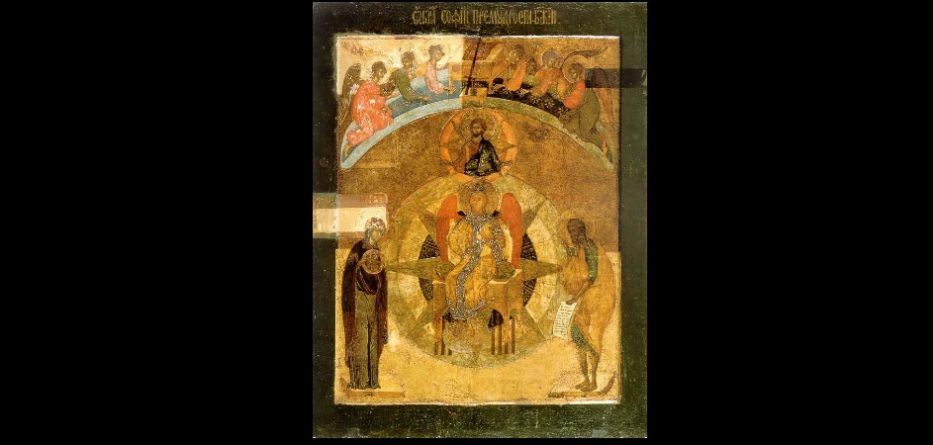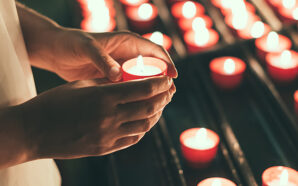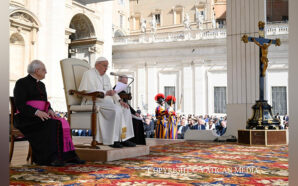Book Review – Mary R. Burke, My Cry is to All That Live: Voices of Women & Earth in the Gospels, Freedom Publishing Books, 2020, ISBN 9780648566182.
I was intrigued when invited to review Mary Burke’s My Cry is to All That Live: Voices of Women & Earth in the Gospels (Freedom Publishing Books, 2020), as the book moved outside of my normal interests. I don’t often explore an ecofeminist point of view and I wasn’t sure that I would find this book relatable. Yet from the preface, I was hooked. It promised to offer a refreshing exploration of the Gospels through the lens of today’s world. From its rich and original iconography, through to imaginary conversations with female characters or nature itself, this book did not disappoint.
Burke writes: “The origins of this book lie in my experience of wanting to speak a word of hope, of meaning and of life to my sisters who have left the institutional Church, who have consciously or otherwise joined Lilith in her refusal to live under patriarchal rule.” This intention is clearly fulfilled in the book sharing insights – often new to me – about women and ecology in scripture and offers an alternate context in which to consider these Gospel passages.
This book can be enjoyed as a straight read, but also works as an inspirational resource for a weekly community gathering, as each of its short chapters stands alone. Its chapters adhere to a basic pattern of a scripture passage followed by background context and reflection. The scripture passage always includes women in its content. The background offers the context of the scripture and highlights passages or words through a female or ecological perspective. The reflections vary from chapter to chapter, from poetry and letters, to imaginary monologues or dialogues featuring the main characters of the Gospel passage.
I was captivated by the variety of literary forms. They offer new and contemporary messages, often expressed in the language of our current time. Some of the reflections juxtapose the traditional story in a modern setting and invite the reader to think deeply about what the Gospel passage means for us in the here and now. Burke, an Australian author, incorporates a notably Australian flavour in the book, which both surprised and excited me. To read a book of faith often employing our Australian vernacular left me smiling, as I enjoyed biblical characters speaking with an Australian accent and exchanging phrases particular to our culture. Such creativity makes for a very relatable and enjoyable text.
At times, the work is confronting in its language and original thought. For instance, having Maltese heritage with a strong devotion to Mary, Mother of God, I audibly gasped when I read the reflection titled, “Mary objects…” I have often reflected on Mary’s ‘Yes’ at the Annunciation and sometimes wondered: What if Mary said no?
However, until now, I cannot recall exploring a reflection of the thought process Mary may have gone through. Burke offers original insights, through the lens of today, of what Mary could have been thinking at different times in her life. For example, I have never encountered a reflection imagining Mary’s agitation regarding the amount of devotion offered towards her. Some readers may find the whole concept affronting to think that Mary, the Mother of God had any doubts at the time of Gabriel’s visit, or someone would dare question Mary’s perfection. I found it comforting, especially as a woman and a mother.
The female voice features strongly throughout. Burke reminds us, through the monologues and dialogues, that the Gospel texts were written by males in and for a male-dominated culture. I don’t believe Burke is berating the male authors but inviting the reader to look deeper into the Gospel passages with an open mind and a healthy level of enquiry. Therefore, this read is not only for women. Rather, the reflections offer examples from a woman’s point of view, from both female and male voices. The voice of Sophia – wisdom – is a defining feature of the book, with Sophia accompanying the reader throughout their journey with the text.
The title of the book, My Cry is To All That Live is not only the cry of Sophia but the cry of lost voices (Proverbs 8:4). The title itself invites the question: who are all that live? Women and men alike. And “all that live” expands beyond a consideration of only human life. Whilst the name of Sophia is not explicit in every chapter, the reader is accompanied by this voice of wisdom, inviting them to be open to the cries of lost voices.
For instance, we hear a story of a woman experiencing domestic violence. Another of a refugee woman. And others from women questioning their portrayal in scripture. All these stories invite the reader to move from a place of complacency to a place of challenge. Through Burke’s creative writing, how is wisdom calling us to hear the cries of all that live?
Similarly, the emphatic cry from the earth resonates strongly. My Cry is to All That Live includes the voice of creation loud and clear. Paralleling the human cry, there is commentary from Mother Earth herself, from many displaced or dismissed fauna, the cry of death and destruction of the natural features of our world such as the Great Barrier Reef and the Amazon, or the depravation of oxygen in the waters of the Murray-Darling basin. These cries of the earth are not only somewhere far away, but in our own country. I could not help but be moved by the stark reality of the cry of Mother Nature. The reflections offer permission to think creatively about the Gospel to include its message to the earth.
The intertwining of the human and the non-human cries – of all that live – is brought together beautifully in the epilogue in a conversation between human, earth and Sophia. The human story is connected to the story of creation and our story of faith is connected to the scientific view of the world. Together, these stories create a whole. As such, one of the strongest features of this book is its insistence that we be creative and open-minded in the way we encounter Gospel passages – “to be read and heard in (the) context of connection and communion with the whole.” Encouraged by wisdom, the reader is commissioned to ‘Wake Up’, listen to this holistic story and heed the cries to make a positive difference for generations to come.
The book not only offers a feast for the mind and heart, but for the eyes. Beautiful iconography introduces each chapter. As Burke explains, “Some of the icons that accompany the Scripture passages are traditional, well-known icons while others have been created as there are no examples of them with the tradition.” The reader is invited to reflect with a given icon as another entry point into a given scripture.
My Cry is To All That Live is most exciting because of its versatility. As I read the book, I imagined all the ways it could be enjoyed in book clubs, faith community settings, high schools, youth groups or young adult groups, adult faith formation settings or simply within friends pondering faith and life. The invitation to think creatively, to be open to different interpretations of scripture, to hear the voice of the earth, opens so many avenues for further discussion. The gift of Burke’s work is that it has the potential to offer so much to so many and is a resource that can be employed many times over.
Burke has created a captivating experience that invites and challenges the reader to hear the voices that are often lost amongst the louder voices of our world and our Church. Accompanied by Sophia, the voice of wisdom, may all who read this book be inspired by Mary and the words that she gives to the lost voices of our world.
Lisa Bright is the Project Officer for the Pastoral Planning Office for the Diocese of Parramatta.









